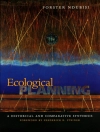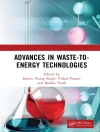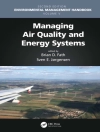Americans drink many gallons of tap water every day, but many of them question the safety of tap water every day as well. In fact, devices have been created to filter tap water directly before reaching cups. It’s true; however, that the provision and management of safe drinking water throughout the United States have seen triumphs in public health since the beginning of the 20th century. Although, advances in water treatment, source water protection efforts, and the presence of local, state, and federal regulatory protection have developed over the years, water in the United States still contain chemical, microbiological, and other types of contaminants at detectable and at times harmful levels. This in addition to the growth of microbial pathogens that can resist traditional water treatment practices have led to the question: Where and how should the U.S. government focus its attention and limited resources to ensure safe drinking water supplies for the future?To deal with these issues the Safe Drinking Water Act (SDWA) Amendments of 1996 Safe included a request that the U.S. Environmental Protection Agency (EPA) publish a list of unregulated chemical and microbial contaminants and contaminant groups every five years that are or could pose risks in the drinking water of public water systems. The first list, called the Drinking Water Contaminant Candidate List (CCL), was published in March 1998. The main function of the CCL is to provide the basis for deciding whether to regulate at least five new contaminants from the CCL every five years. However, since additional research and monitoring need to be conducted for most of the contaminants on the 1998 CCL, the list is also used to prioritize these related activities.Classifying Drinking Water Contaminants for Regulatory Consideration is the third report by the Committee on Dinking Water Contaminants with the purpose of providing advice regarding the setting of priorities among drinking water contaminants in order to identify those contaminants that pose the greatest threats to public health. The committee is comprised of 14 volunteer experts in water treatment engineering, toxicology, public health, epidemiology, water and analytical chemistry, risk assessment, risk communication, public water system operations, and microbiology and is jointly overseen by the National Research Council’s (NRC’S) Water Science and Technology Board and Board on Environmental Studies and Toxicology. In this report the committee needed to readdress its second report as well as explore the feasibility of developing and using mechanisms for identifying emerging microbial pathogens for research and regulatory activities. The promotion of public health remains the guiding principle of the committee’s recommendations and conclusions in this report.
Board on Environmental Studies and Toxicology & Committee on Drinking Water Contaminants
Classifying Drinking Water Contaminants for Regulatory Consideration [PDF ebook]
Classifying Drinking Water Contaminants for Regulatory Consideration [PDF ebook]
Acquista questo ebook e ricevine 1 in più GRATIS!
Lingua Inglese ● Formato PDF ● Pagine 255 ● ISBN 9780309565349 ● Casa editrice National Academies Press ● Pubblicato 2001 ● Scaricabile 3 volte ● Moneta EUR ● ID 7147142 ● Protezione dalla copia Adobe DRM
Richiede un lettore di ebook compatibile con DRM












